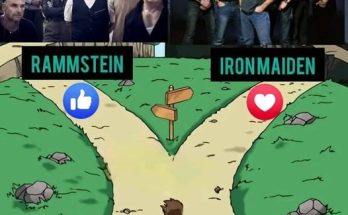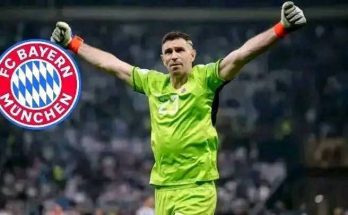Taelon Peter’s stint with the Indiana Pacers during the NBA Summer League has turned heads, marking him as a player to watch as he sets his sights on making the team’s roster. Selected 54th overall in the 2025 NBA Draft, Peter arrived with a quiet confidence backed by a stellar collegiate career that saw him evolve from a Division II standout into one of Liberty University’s best shooters and most efficient scorers. His Summer League performance demonstrated that the skills and poise he developed at the college level might translate to the professional stage, making him a compelling candidate for a role on the Pacers moving forward.
In just three Summer League games, Peter averaged over 10 points per contest, shooting an efficient 56.5 percent from the field. While his three-point shooting percentage dipped to around 23 percent compared to his college numbers, this is hardly unexpected given the transition to NBA-caliber defenders and the faster pace of professional play. He also contributed more than four rebounds a game despite playing less than 26 minutes per outing, showing an ability to battle on the glass that is not always common for a guard or wing his size. Alongside these scoring and rebounding numbers, he chipped in around two assists per game and maintained a low turnover rate, all hallmarks of a player who understands his role and chooses his spots carefully.
What makes Peter’s Summer League showing particularly noteworthy is not just the raw stats but the efficiency and intelligence behind them. At Liberty, he posted a true shooting percentage north of 72 percent, a figure that signals elite shot selection and scoring efficiency. He set a school record by shooting 45.3 percent from beyond the arc in his senior season and maintained a balanced offensive profile that combined spot-up shooting with timely drives and physicality around the rim. His ability to read defenses, move without the ball, and pick his spots with patience translated well to the Summer League environment. Rather than forcing plays or settling for low-percentage shots, Peter demonstrated a mature offensive approach that could be highly valuable in an NBA role player capacity.
Peter’s game is also defined by its tactical clarity. NBA analysts have pointed to his potential as a “three-and-D” player—a wing who can space the floor with shooting and guard multiple positions on the perimeter. The Pacers organization clearly recognizes this, with team president Kevin Pritchard’s social media thumbs-up emoji in response to Peter’s Summer League performance suggesting that the front office views him as a promising developmental prospect. This endorsement signals that Peter is in the mix for one of the coveted two-way contracts the team typically uses to cultivate young talent, providing him with a platform to develop further in the G League while remaining tethered to the NBA roster.
Peter’s style of play fits neatly with the modern NBA’s increasing emphasis on efficiency, spacing, and defensive versatility. His college numbers were underpinned by an ability to avoid turnovers and take smart shots, qualities that summer league data confirmed. He averaged just over one steal per game in Vegas, indicating active hands and defensive awareness, even if he still needs to improve his lateral quickness and consistency in coverage at the professional level. Nonetheless, the building blocks of a reliable perimeter defender are visible, especially for a player of his size—6-foot-4 and 210 pounds—who can use strength and length to contest shots and battle smaller wings.
Beyond the statistical snapshot, Peter impressed with his composure and poise. His demeanor on the court suggested a player who understands the pressures of professional basketball and approaches each possession with the right balance of aggression and discipline. Former Pacers guard Johnny Furphy, a Summer League veteran, praised Peter as “super skilled” and “super polished,” calling him an overlooked prospect whose efficiency could easily translate into meaningful minutes. This insider perspective holds weight, as it comes from someone familiar with the team’s culture and the demands of NBA play. Such recognition hints that Peter is not just a name on a roster but a player with tangible value and promise.
One of the most compelling aspects of Peter’s game is his calculated aggression. Unlike many young players who rush or try to do too much in Summer League settings, he showed a willingness to let the game come to him. His offense combined spot-up threes, drives to the basket, and smart decision-making around contact. He is built like a player who can absorb physicality, using his strength to finish plays through defenders while maintaining control of his shot mechanics. This balance of skill and physicality is crucial for a wing hoping to carve out a role as a reliable rotation piece.
His rebounding numbers also stand out, especially for a guard-sized player. Averaging more than four boards a game in limited minutes signals strong anticipation and hustle. It suggests a player who is willing to do the dirty work, crash the glass, and secure possessions for his team—traits that coaches prize in role players. Peter’s willingness to contribute on the boards reflects a team-first mentality and an understanding that value in the NBA often comes from versatility and effort beyond scoring.
Defensively, Peter displayed flashes of the potential that earned him his draft selection. His one steal per game reflects active hands and an ability to disrupt opponents, while his size allows him to guard multiple positions. That said, defensive consistency at the NBA level remains a developmental area. Improvements in foot speed, defensive positioning, and awareness will be key if he hopes to stick on a roster that increasingly prizes switching and versatility on that end of the floor. However, given his physical profile and work ethic, there is reason to believe these areas can be improved with time and coaching.
The narrative around Peter’s growth trajectory is reinforced by the organization’s strategic use of Summer League and the two-way contract system. While he may not be NBA-ready to contribute significant minutes immediately, the Pacers see enough in his game to invest in his development. This aligns with modern roster-building trends, where teams stockpile young wings who can develop shooting and defense in the G League, preparing them for eventual NBA roles. Analysts suggest Peter’s path may mirror those of players who began as late-round picks or undrafted free agents and grew into valuable “3-and-D” contributors, gradually carving out their niche through dedication and steady improvement.
Peter’s collegiate journey underscores this potential. He began his career at Arkansas Tech in Division II, where he posted impressive averages and earned conference player of the year honors. His subsequent transition to Liberty, a Division I school, saw him accept a sixth-man role that showcased his efficiency and ability to adapt quickly to new competition levels. This trajectory—from Division II to a leading role in Division I and then to the NBA Summer League—reflects resilience, adaptability, and a work ethic that coaches and organizations covet. It speaks to a player who embraces challenges, continuously refines his game, and meets each step with readiness.
Comparisons have been drawn between Peter and players like Max Strus, an undrafted sharpshooter who forged a successful NBA career through relentless work and shooting ability. While Peter is not an exact match, the analogy helps frame his upside. Like Strus, Peter offers a combination of shooting touch, defensive willingness, and mental toughness that can earn minutes on a competitive team. His Summer League performance, which included moments of flawless shooting and smart playmaking, echoes the traits of a player capable of carving out a niche role.
One defining moment of his college career illustrates this well: in a key game, Peter scored 20 points on perfect shooting, including a flawless three-point mark. His approach then, as now, emphasizes efficiency over flashiness, a trait that NBA teams prize highly. This brand of play—consistent, reliable, and high-percentage—is what keeps role players in rotations and helps teams win close games.
With the Summer League now behind him, Peter stands at an important crossroads. The positive signals from the Pacers front office, combined with his statistical profile and intangibles, position him as a strong candidate for a two-way contract or similar developmental deal. The team’s current roster construction, which balances youth and experience, creates an opening for players like Peter who bring shooting and defense. Moreover, with injuries and roster turnover, there could be an opportunity for him to earn minutes sooner than expected.
What he needs to focus on going forward is clear. Improving his three-point consistency at the NBA level will be critical, as his Summer League dip showed that the adjustment isn’t automatic. Developing more playmaking ability—especially in reading defenses, creating for teammates, and making quick decisions—will boost his value. Defensive improvements, particularly in lateral quickness and positioning, will also be key. However, the foundation is solid: he’s efficient, poised, and coachable.
Ultimately, Taelon Peter’s Summer League performance with the Indiana Pacers was a strong first step on his professional journey. He demonstrated that he belongs on the court with NBA prospects and that his skill set has meaningful upside. His efficiency, poise, and mature approach to the game make him a valuable piece in the Pacers’ long-term plans. While the path to a guaranteed NBA roster spot remains challenging, Peter’s blend of shooting, defense, and work ethic gives him a legitimate chance to grow into a trusted rotational player. The organization has taken notice, and fans who appreciate underdog stories and steady development should keep an eye on him as the next chapter unfolds.



